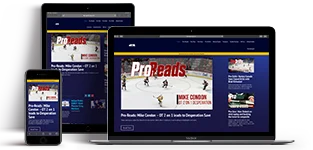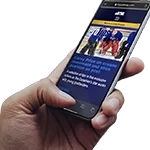Evidence Based Goaltending
 Today InGoal welcomes Brandon Thibeau with the first of his series on Goaltending Science, inspired by his work as the founder of the IQ Goalie e-digest newsletter series. Instagram: @IQ_Goalie
Today InGoal welcomes Brandon Thibeau with the first of his series on Goaltending Science, inspired by his work as the founder of the IQ Goalie e-digest newsletter series. Instagram: @IQ_Goalie
Thibeau is a former Canadian Hockey League and Canadian University goaltender. He has a Bachelor’s degree in Psychology and a Master’s of Science degree in Physiotherapy. He is currently coaching U18 in Nova Scotia and is a Scout in the QMJHL.
In healthcare, the use of evidence-based practice is the gold standard. Evidence based practice means that when a health professional is presented with a problem, a decision is made using a combination of 3 things:
- The experiences of the clinician
- The preferences of the patient
- The best available scientific evidence
This concept could be applied in goaltending as well. For many years, Goaltenders and coaches have not had abundant access to the third item on this list. Over the last decades, this has slowly changed.
It is also known that it takes a very long time for something to be used in practice even after it has been proven in a lab or written in a research paper. In healthcare, this gap is an average of 17 years. Yes, you read that correctly… 17 years.
In goaltending, we are seeing this same concept in full swing. Hunger for more information from goalies and coaches has liberated science that has been waiting patiently to be applied to or position. Our job as goalies and coaches is to find this science and put it to good use.
Become a Member to Read the Full Article
We're working hard to bring you the best exclusive goaltending content whether you play goal, you are a coach, a parent of a goaltender, or a fan of the greatest position in sports.
Learn what you get as an InGoal Subscriber for less than $1 a week.
Already a member?
Comments
Let's talk goaltending!
We welcome your contribution to the comments on this and all articles at InGoal. We ask that you keep it positive and appropriate for all - this is a community of goaltenders and we're here for each other! See our comment policy for more information.





For so many years I have just been focusing on the puck. Then recently, just for fun while watching games on TV I started to watch the pucks on the players stick blades to see if I could anticipate where the pass or shot was going. This was particularly amazing on slow motion replays where you could almost always tell where the player was shooting just before and up to a few moments after the release on the blade. I can’t always do this in my adult hockey games because my concentration often waivers, but when I do succeed in watching the puck off the blade it works amazingly. Highly recommend the beer leaguers out there give the science a try……..
Thanks Steve for sharing your experience. We definitely recommend doing this as well as tracking pucks from behind the net during warmup when you go to watch games whenever you’re seeing players above your current level. A lot can be learned when you watch with a purpose.